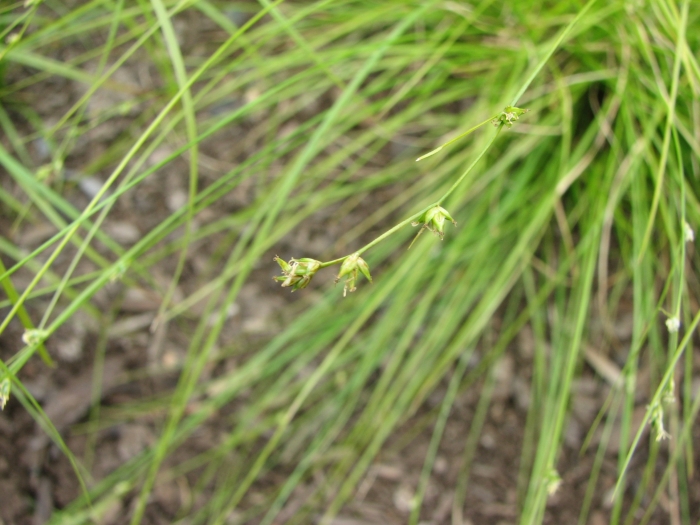Appalachian Sedge
(Carex appalachica)
Appalachian Sedge (Carex appalachica)
/
/

Choess
CC BY-SA 3.0
Image By:
Choess
Recorded By:
Copyright:
CC BY-SA 3.0
Copyright Notice:
Photo by: Choess | License Type: CC BY-SA 3.0 | License URL: https://creativecommons.org/licenses/by-sa/3.0 | Uploader: Choess | Publisher: Wikimedia Commons | Title: Carex_appalachica_fruiting.JPG | Notes: |





















Estimated Native Range
Summary
Carex appalachica, commonly known as Appalachian Sedge, is a semi-deciduous perennial grass native to the understory of deciduous forests, particularly those in the Appalachian Mountains of Eastern North America. It typically grows to a height and width of 0.7-1 feet (0.2-0.3 meters), forming dense clumps of fine-textured, grass-like foliage. The plant features narrow, arching leaves that add a delicate texture to garden compositions. Appalachian Sedge is not known for showy flowers, but it does produce small, inconspicuous greenish-brown flower spikes in late spring to early summer.
Appalachian Sedge is valued for its adaptability and low maintenance requirements, making it an excellent choice for naturalistic plantings, shade gardens, and erosion control on slopes. It is often used as a ground cover or as an alternative to traditional lawn grass in shady areas where lawn grasses may struggle. This sedge prefers partial shade but can tolerate full sun in cooler climates. It thrives in a variety of soil types, provided they have good drainage. While it has medium water requirements, it can tolerate some drought once established. In terms of cultivation, it is relatively pest and disease-free, but can occasionally suffer from rust or fungal leaf spots in overly moist conditions.CC BY-SA 4.0
Appalachian Sedge is valued for its adaptability and low maintenance requirements, making it an excellent choice for naturalistic plantings, shade gardens, and erosion control on slopes. It is often used as a ground cover or as an alternative to traditional lawn grass in shady areas where lawn grasses may struggle. This sedge prefers partial shade but can tolerate full sun in cooler climates. It thrives in a variety of soil types, provided they have good drainage. While it has medium water requirements, it can tolerate some drought once established. In terms of cultivation, it is relatively pest and disease-free, but can occasionally suffer from rust or fungal leaf spots in overly moist conditions.CC BY-SA 4.0
Plant Description
- Plant Type: Grass
- Height: 0.7-1 feet
- Width: 0.7-1 feet
- Growth Rate: Moderate
- Flower Color: N/A
- Flowering Season: Spring, Summer
- Leaf Retention: Semi-Deciduous
Growth Requirements
- Sun: Full Sun, Part Shade
- Water: Medium
- Drainage: Medium, Fast
Common Uses
Bird Garden, Butterfly Garden, Deer Resistant, Drought Tolerant, Groundcover, Low Maintenance, Street Planting
Natural Habitat
Understory of deciduous forests in the Appalachian Mountains
Other Names
Common Names: Carex Des Appalaches
Scientific Names: , Carex appalachica,
GBIF Accepted Name: Carex appalachica J.M.Webber & P.W.Ball